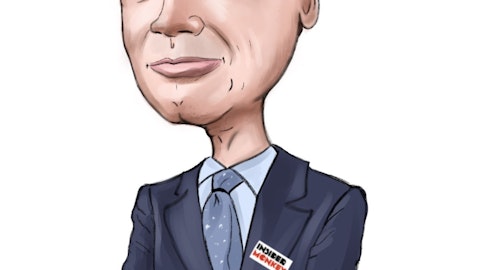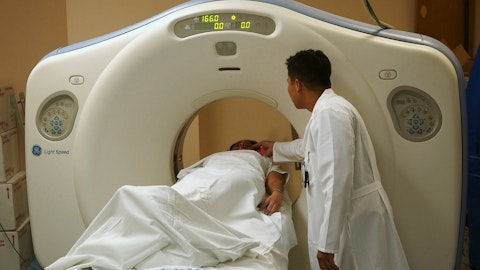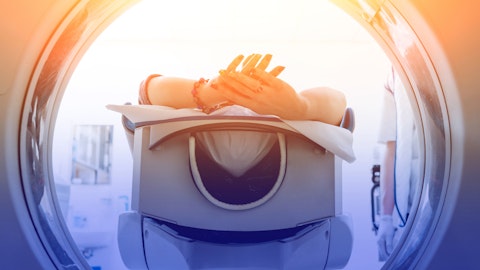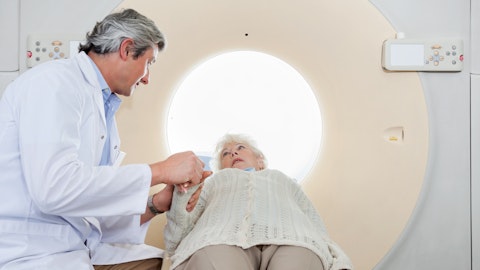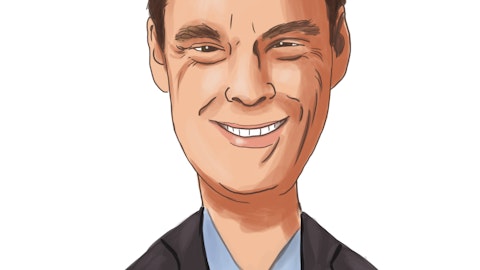They don’t need to do that. It allows them the steerability ops we built in to go back and forth between the different parts of the atrium and to really treat the body in a different way. It’s faster and safer, we believe. So some really unique design elements that are already built in the product that we’ve heard great feedback on. And we’ve collected other feedback from some design enhancements they’d like to see. And that’s what we’ll offer later this calendar year, when we come out with our second-gen product, which is timed really well with what we think will be our PE indication expansion. Today, John, we talked about the pricing in the market is in the $1,000 mark. In that range, we think is uniquely priced right to be competitive with the other products out there.
And the value that our customers receive, we think, has been really high. They’ve really shown a willingness to adapt that price point. It’s a good price point for us in this market. I can’t speak to the other companies. We know where they price their product. Some do it differently. But we think we’re in a good spot there. The product will have a high gross margin at that range and we look to grow in that range of pricing for years to come.
John Young: Great. Thank you so much.
Operator: Our next question is from the line of Jayson Bedford with Raymond James. Pleased to see with your questions.
Jayson Bedford: Just a few questions. On the AlphaVac improvements, just from a regulatory standpoint, do they require an additional 510(k)? Or can the – can you launch some without any new regulatory approvals?
Jim Clemmer: Hi Jayson, so the regulatory team is working with the R&D team. So I think that one of the enhancements actually requires a new F 510(k) one does not – so these are design changes that were planned in with the R&D and the regulatory teams. So that’s why we’re looking at that second half of this calendar year, the cycle that our regulatory teams, quality teams and R&D teams have targeted, we feel confident we’ll hit those cycles.
Jayson Bedford: Okay. And then just on thrombectomy, you mentioned some procedural softness late in the quarter. I’m just wondering, what do you attribute the softness to?
Jim Clemmer: Yes, Jayson, we obviously measure this very closely with our customers. And we saw that softness occur, that November time frame. And we talk to our customers. We had two things happening. There was actually a wind down. We’re getting very close to the end of the APEX study, and our study sites knew that. So some were finishing up, some are winding down. So we’re kind of careful how we measure this. But we also had a lot of conversations with our customers, with “same-store sales” people who use a certain amount of the product. Their usage went down. We spoke to them in a couple. They all shrugged their shoulders a bit said, hey, we haven’t seen the patients come through lately at the rate they normally do. A little less control they had or we had over that marketplace.
It was not huge, but enough for us that it’s still a small business for us, AlphaVac getting growing. So it’s impactful for us. We watch it closely. So there’s a couple of factors there. We don’t want to put our arms around any one in particular. Again, the opportunity that we have with training and education of our team, getting them ready for the PE launch later this calendar year we think is most impactful. Whether there’s a bit of softness back and forth won’t really matter then because the upside opportunity, we believe, is significant for us.
Jayson Bedford: And have you seen a bit of a rebound in December?
Jim Clemmer: Yes, a little bit, step back a little bit, not a whole lot. Again, as I said, we’re measuring it differently. And also, Jayson, we have the other factor where it was the first couple of days in December, where the final patients were enrolled. So we completed the study in the first couple of days of December, which really enabled us to shut down the study and then pull back, obviously, on the education of the study. We can’t sell and market the product outside of the study terms until we get the PE market. So there’s a couple of moving parts having at the same time. I just want to make you aware of that. So we’re watching all those elements together.
Jayson Bedford: And just – what’s the logistical process of moving to a fully outsourced model? Like how is this going to work?
Jim Clemmer: Yes. So we have sites here in Upstate New York that were started almost when our company was founded 35 years ago in upstate New York. We’ve got two manufacturing sites, distribution sites as well. So what we’ll do is a two year wind down, Jayson. The announcement we made yesterday starts that two year process. So we talked to our people at the site yesterday. This has been planned for – for you can imagine, nine to 12 months, the planning phase. And you’ve also seen, a couple of years ago, we started moving some of the operations to Costa Rica because we needed capacity during the pandemic period. We had less availability of new employees and operators. So we started some of those moves for our Med Device products during that period.
